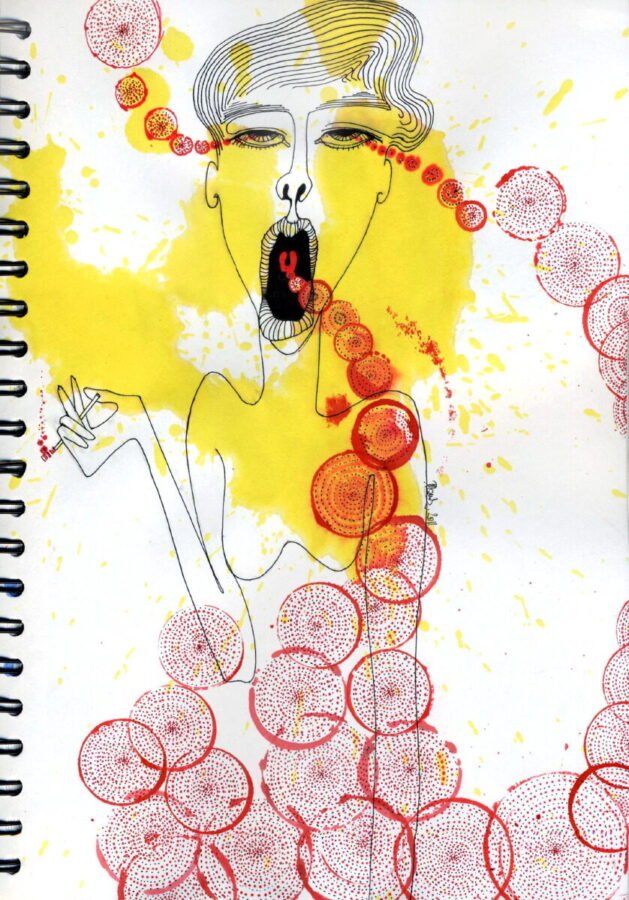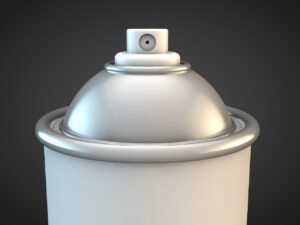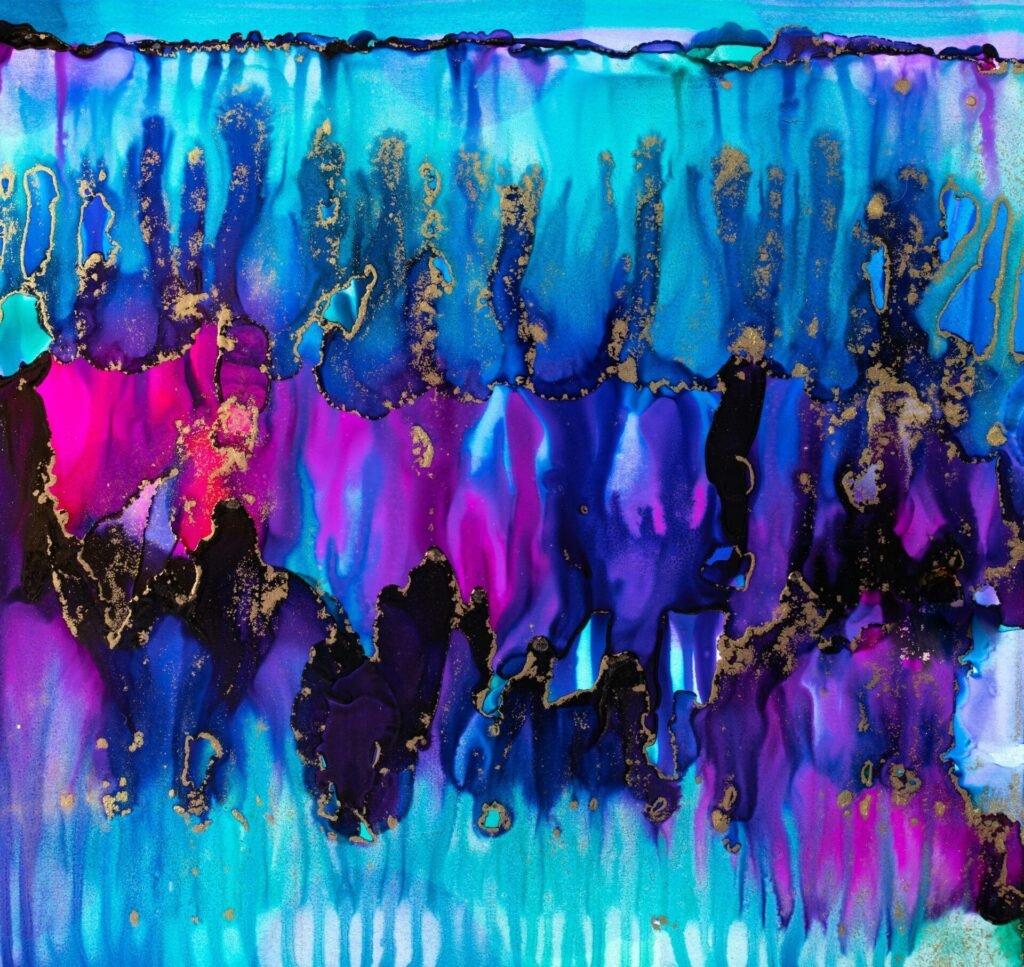What Are Alcohol Inks?
Vibrant, fluid, and endlessly unpredictable—alcohol inks in art have taken the creative world by storm. Whether you’re a seasoned painter or a curious beginner, these highly pigmented, fast-drying inks offer a unique way to explore color, movement, and texture. In this complete guide, we’ll walk you through what alcohol inks are, how to use them from start to finish, and how to unlock their full potential in your artwork.

credit: ANIAPAWLIK
Alcohol inks are dye-based, highly saturated pigments suspended in isopropyl alcohol. Unlike water-based inks or acrylics, they evaporate quickly, leaving behind bold, translucent layers of color. Their fluid nature makes them ideal for abstract art, mixed media, and decorative surfaces like glass, metal, ceramic, and synthetic paper.
These inks are acid-free, waterproof once dry, and can be reactivated with additional alcohol or blending solution—making them incredibly versatile for layering and reworking.
Essential Supplies for Alcohol Ink Art
Before diving into techniques, gather the right tools to ensure a smooth creative process:
- Alcohol inks: Available in a wide range of colors, including metallics and pastels
- Isopropyl alcohol (91% or higher): Used to dilute, blend, and reactivate ink
- Blending solution: A resin-based medium that softens and lightens ink
- Non-porous surfaces: Yupo paper, ceramic tiles, glass, metal, or synthetic panels
- Applicators: Brushes, droppers, felt pads, or air blowers
- Protective gear: Gloves, apron, and a well-ventilated space
- Sealant: UV-resistant spray or resin to protect finished work
Sketchbooks.org | VISUAL RESEARCH HUB
Alcohol Ink Art Examples
Visual research is critical for any creative endeavor. We have compiled specialized links to lead you directly to images, videos, and inspiration for "Alcohol Ink Art Examples" across the web's best visual search platforms.
Choosing the Right Surface
Alcohol inks work best on non-absorbent surfaces that allow the pigment to sit on top rather than soak in. Here are some popular options:
- Yupo paper: A synthetic, waterproof paper that allows for smooth blending and reworking
- Ceramic tiles: Great for coasters or wall art
- Glass and metal: Ideal for decorative pieces or functional art
- Acrylic panels: Durable and modern-looking for display
- Glossy cardstock: A budget-friendly option for practice
Avoid porous surfaces like watercolor paper or untreated wood, as they absorb the ink and dull its vibrancy.
Alcohol Ink Techniques from Start to Finish
1. Prepare Your Workspace
Cover your surface with a plastic sheet or craft mat. Ensure good ventilation, especially when using isopropyl alcohol or sealants. Wear gloves to avoid staining your hands.
2. Prime the Surface (Optional)
Some artists like to wipe the surface with isopropyl alcohol before applying ink to remove dust and create a clean base. This step is especially helpful on glass or tile.
3. Apply the Ink
There are several ways to apply alcohol ink:
- Drop technique: Apply ink directly from the bottle for bold, organic shapes
- Brush technique: Use synthetic brushes for more control
- Air manipulation: Use a straw, air blower, or canned air to move ink around
- Tilt and swirl: Move the surface to guide the flow of ink
- Layering: Let one layer dry before adding another for depth and contrast
4. Blend and Manipulate
Add isopropyl alcohol or blending solution to soften edges, create blooms, or lift color. You can also use a felt applicator to dab and blend areas for texture.
5. Add Details
Once dry, you can enhance your piece with:
- Metallic inks or foil for shimmer
- Ink pens or markers for line work
- Acrylic paint for contrast or mixed media effects
6. Seal Your Artwork
Alcohol inks are not lightfast and can fade over time. Protect your work with:
- UV-resistant spray varnish for paper or tile
- Resin coating for a glossy, durable finish on coasters or panels
Always test your sealant on a small area first to avoid smudging.
Creative Applications of Alcohol Inks
- Abstract wall art
- Decorative coasters and trays
- Jewelry and pendants
- Greeting cards and bookmarks
- Mixed media and collage backgrounds
- Glassware and home décor
The possibilities are endless—alcohol inks are as much about play as they are about precision.

Sketchbooks.org | TRADITIONAL MATERIALS
Fixatives For Paper and Mixed Media | Protect Your Paper Drawings
Sketchbooks are sacred spaces for artists—repositories of raw ideas, emotional expression, and technical exploration. Whether you're working in graphite, charcoal, ink, watercolor, pastel, or mixed media, preserving your pages is essential. This guide dives deep...
Frequently Asked Questions
What surfaces work best for alcohol ink?
Non-porous surfaces like Yupo paper, ceramic tile, glass, and metal are ideal.
Can I use regular paper with alcohol inks?
No, regular paper absorbs the ink and causes dull, uneven results.
What’s the difference between blending solution and isopropyl alcohol?
Blending solution contains resin and slows drying, while isopropyl alcohol evaporates quickly and spreads the ink.
Are alcohol inks permanent?
Yes, once dry they are waterproof, but they can be reactivated with alcohol unless sealed.
How do I clean up alcohol ink?
Use isopropyl alcohol to clean tools and surfaces; wear gloves to avoid staining your skin.
Can I use alcohol inks on fabric or wood?
They’re not ideal for porous surfaces unless sealed or treated beforehand.
Do I need to seal my alcohol ink artwork?
Yes, sealing protects against UV damage and preserves color vibrancy.
Are alcohol inks safe to use indoors?
Yes, with proper ventilation—avoid inhaling fumes and always work in a well-aired space.
Final Thoughts
Exploring alcohol inks in art is like stepping into a world where color dances and spontaneity reigns. With the right tools, surfaces, and techniques, you can create stunning, fluid artwork that’s as bold or delicate as you like. Whether you’re experimenting on Yupo paper or crafting functional art on ceramic, alcohol inks offer a rewarding and expressive medium for artists of all levels.
So grab your inks, clear a space, and let the colors flow—your next masterpiece might just start with a single drop.
Ready to Share Your Work?








New fave tool alert! I had no idea alcohol inks could do that.
Okay, but why didn’t anyone teach me this in art school?